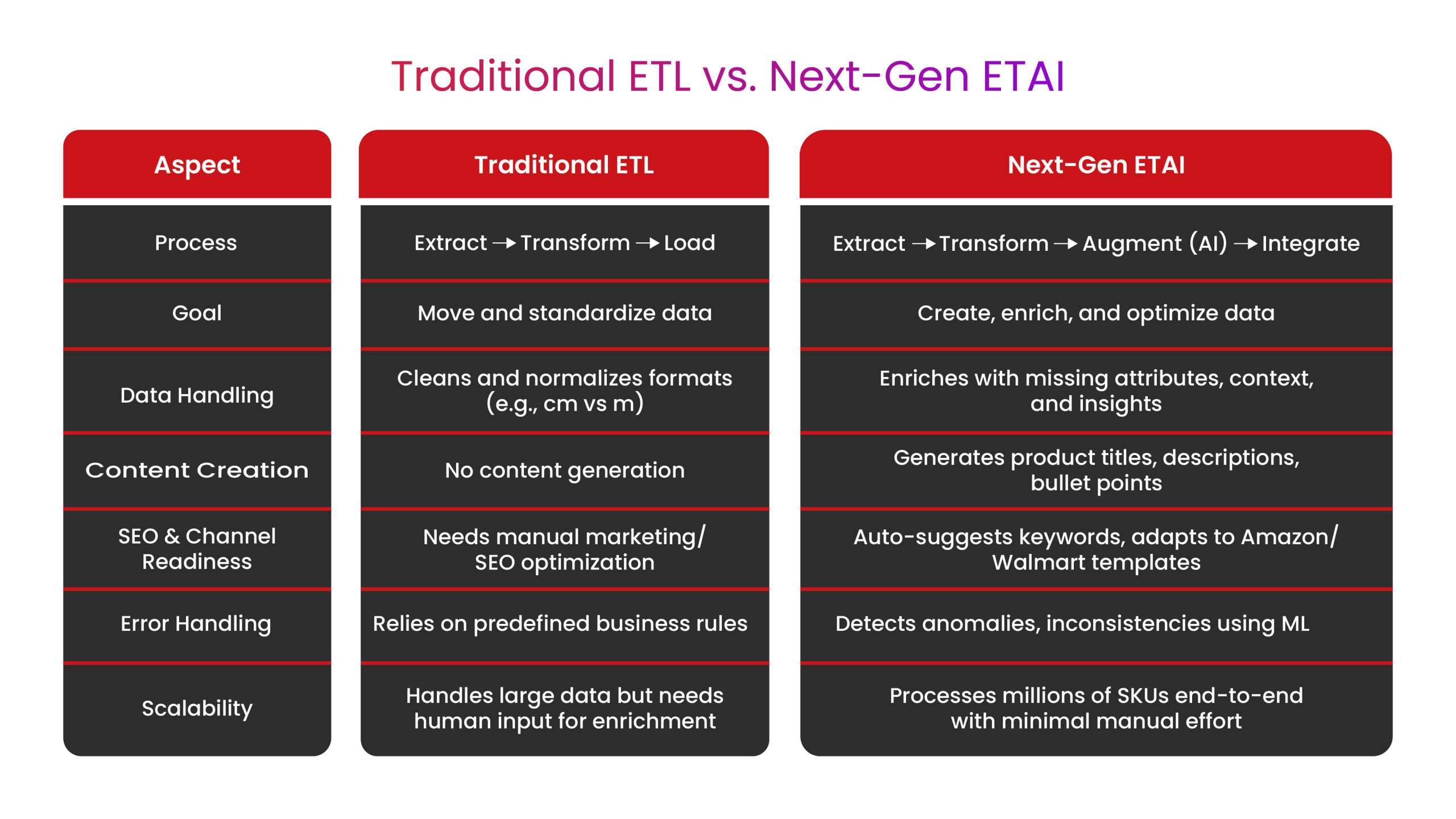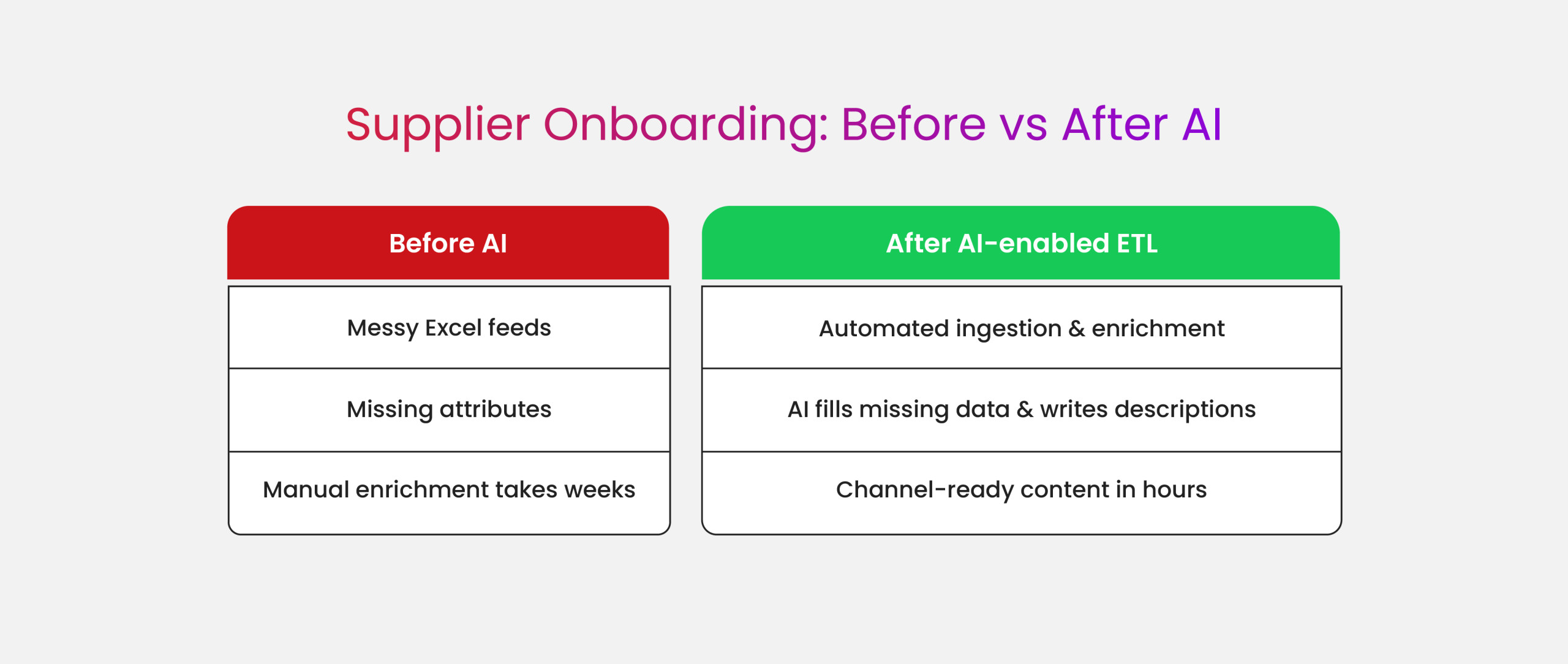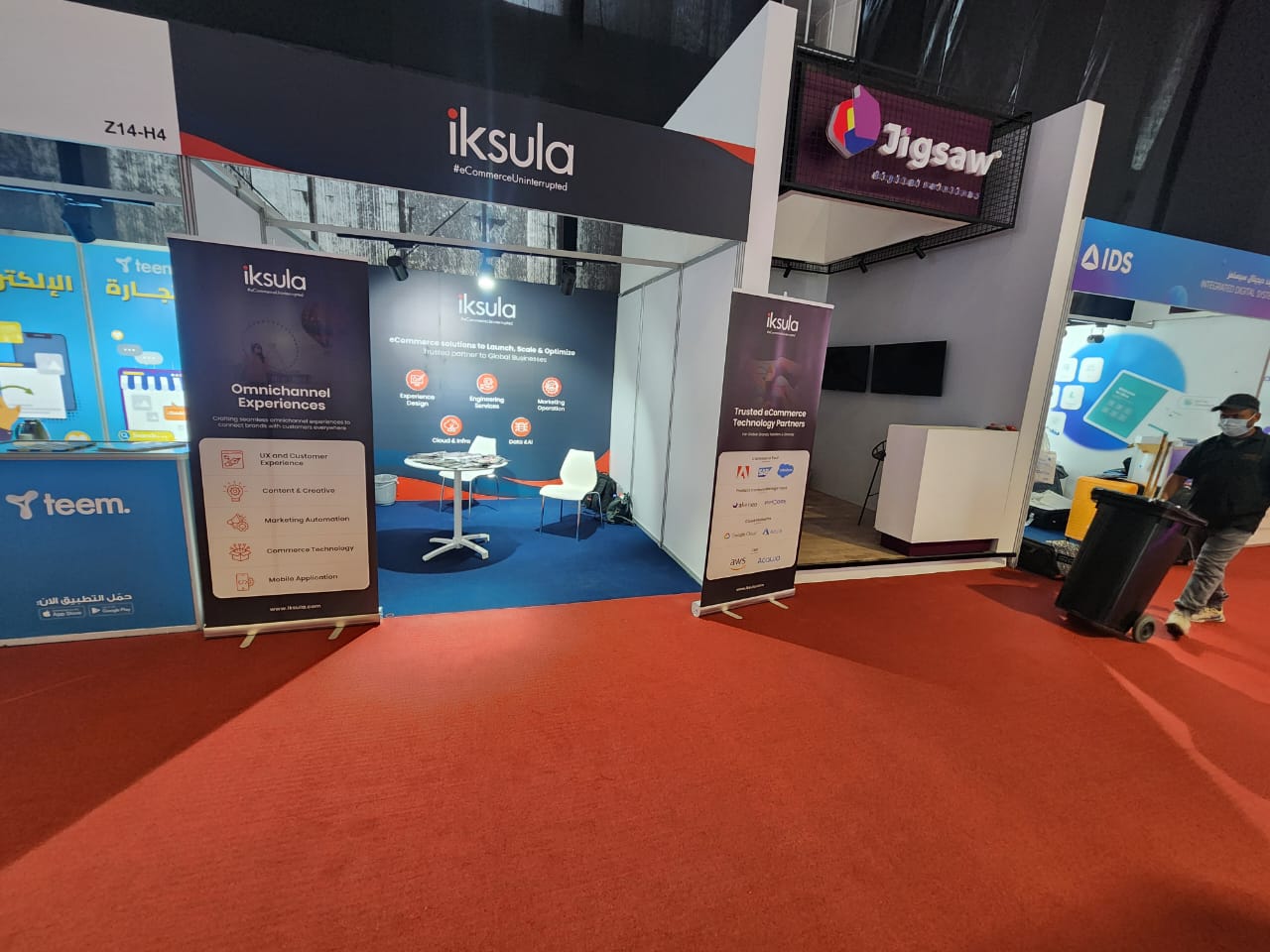Retailers and brands today manage catalogs with thousands — sometimes millions — of SKUs. The challenge isn’t just storing this data, but ensuring it’s accurate, consistent, and enriched enough to meet the expectations of both customers and marketplaces. Manual fixes can’t keep up at this scale.
That’s why companies are rethinking their data pipelines, combining ETL workflows with Generative AI to deliver complete, commerce-ready content automatically.
Introduction: Why It Matters Today
Digital commerce runs on data, and the most critical data of all is product content. For retailers, brands, and manufacturers, the way product information is prepared — from attributes and specifications to descriptions and images — directly influences sales conversion, search visibility, and customer confidence.
But product data rarely arrives in perfect shape. Supplier spreadsheets are inconsistent, critical fields are missing, and every channel (Amazon, Lowe’s, Walmart, or a brand’s own site) expects its own format. Traditional ETL (Extract, Transform, Load) pipelines have long been the backbone for moving this information into PIMs and eCommerce systems. They do a great job of cleaning and standardizing, but they don’t create or enrich.
This is exactly where Generative AI comes in. By blending AI into ETL workflows, organizations can now transform raw, fragmented product data into complete, commerce-ready content at scale.
Why Product Content Is Still a Struggle
Even in 2025, many teams wrestle with the same pain points:
- Messy inputs: Every supplier uses different naming, units, or formats.
- Missing details: Important information like dimensions, compliance data, or materials isn’t always provided.
- Channel complexity: Marketplaces demand their own taxonomy, templates, and tone.
- Manual bottlenecks: Teams spend weeks reworking data before a product can even go live.
- Business cost: Incomplete or low-quality product content reduces discoverability, increases returns, and erodes trust.
Traditional ETL pipelines get the data into the right place but don’t make it ready for the customer.
The Role of ETL (and Its Limits)
ETL has been essential to commerce data operations for years:
- Extract → Ingest files, APIs, or feeds from ERPs, suppliers, or internal sources.
- Transform → Standardize, normalize, and clean the information.
- Load → Push the harmonized dataset into a downstream system like a PIM or storefront.
For example: one supplier might send “Length = 200cm” while another says “Length = 2m.” ETL reconciles both into a standard format.
This ensures orderliness but does not fill in the blanks, write descriptions, or optimize for search and channel guidelines. Those gaps have historically required people.
The Turning Point: ETL Infused With Generative AI
The integration of AI changes ETL from a pipeline into an intelligent assistant. AI intervenes especially during the transformation stage, turning it into ETAI (Extract, Transform, Augment, Integrate):
- Filling missing attributes: AI can read PDFs, images, or manuals to extract details like “battery type” or “finish.”
- Content creation: GenAI can generate descriptions, titles, and bullet points that meet Amazon or Lowe’s requirements.
- Taxonomy mapping: AI can reconcile inconsistent attribute names and map them to the correct hierarchy.
- Error detection: ML models can flag outliers (e.g., “wooden hammer, voltage = 220V”).
- SEO enrichment: Suggested keywords and phrases improve discoverability before the product even goes live.

Practical Use Cases
- Supplier Onboarding
- Before: Content teams manually review and reformat supplier Excel sheets.
- Now: AI-enhanced ETL ingests, enriches, and generates missing details, producing ready-to-publish SKUs in hours.

- Content Syndication
- Before: A central catalog is manually adapted for each marketplace.
- Now: AI reformats and rewrites automatically for Amazon, Walmart, Shopify, and others while maintaining brand tone.
- Data Quality Checks
- Before: QA relied on rigid business rules and manual spot checks.
- Now: AI models continuously identify duplicates, missing values, and inconsistencies.
- SEO & Conversion Optimization
- Before: Marketing teams manually add keywords and polish descriptions.
- Now: AI suggests SEO-friendly titles and content within the ETL flow, reducing rework.
Benefits That Matter to Businesses
- Speed → Onboarding timelines collapse from weeks to days or hours.
- Scale → Millions of SKUs can be processed simultaneously.
- Consistency → Unified taxonomy and tone across suppliers, geographies, and channels.
- Conversion → Richer, optimized content directly impacts sales and lowers returns.
- Efficiency → Automation trims 30–40% of manual effort, freeing teams for strategic work.

What’s Next for ETL + AI
- Streaming-first pipelines: Near real-time updates instead of batch processes.
- Multimodal AI: Extracting product attributes from text, images, and video.
- ETAI as standard: “Augment” becomes an expected stage in every pipeline.
- Human validation: A hybrid model where humans oversee AI outputs for critical categories.
The evolution is clear: ETL is no longer just about moving data; it’s about delivering decision-ready, consumer-ready product information.
Conclusion
Commerce companies live or die by their product content. Traditional ETL built the foundation by moving and standardizing data, but it has limits. Generative AI now extends ETL into a new role: creating, enriching, and optimizing product content at scale.
Organizations that embrace this combined model will be able to launch faster, compete better, and offer customers the high-quality information they expect — across every channel.
The future of product content management is not ETL alone, but ETL plus AI, working together as an intelligent content engine.
“At Iksula, we’re already building this future through accelerators like Athena Data Quality and the Pre-filled Catalog — helping global commerce leaders transform product data into growth-ready content.”









































